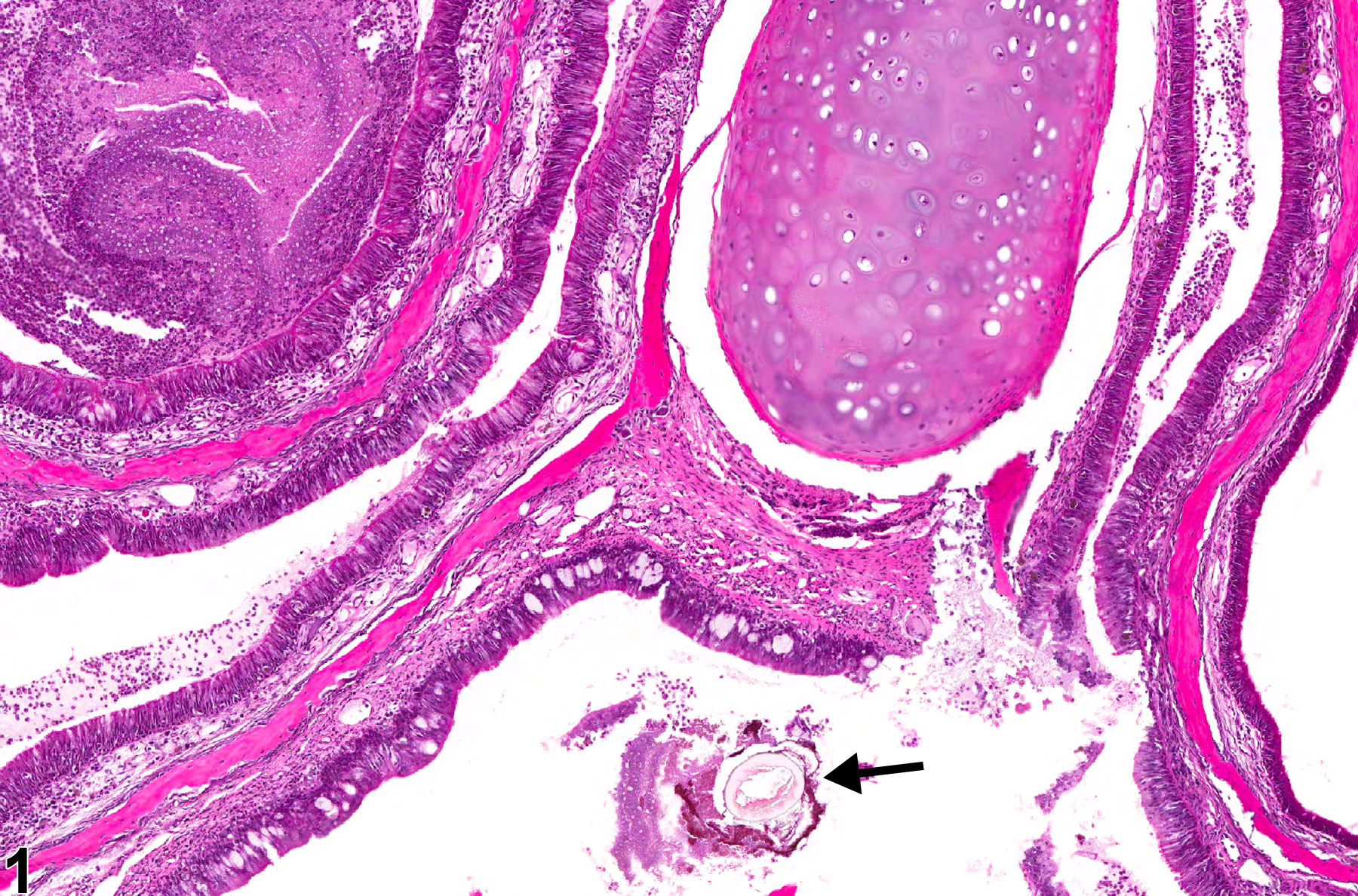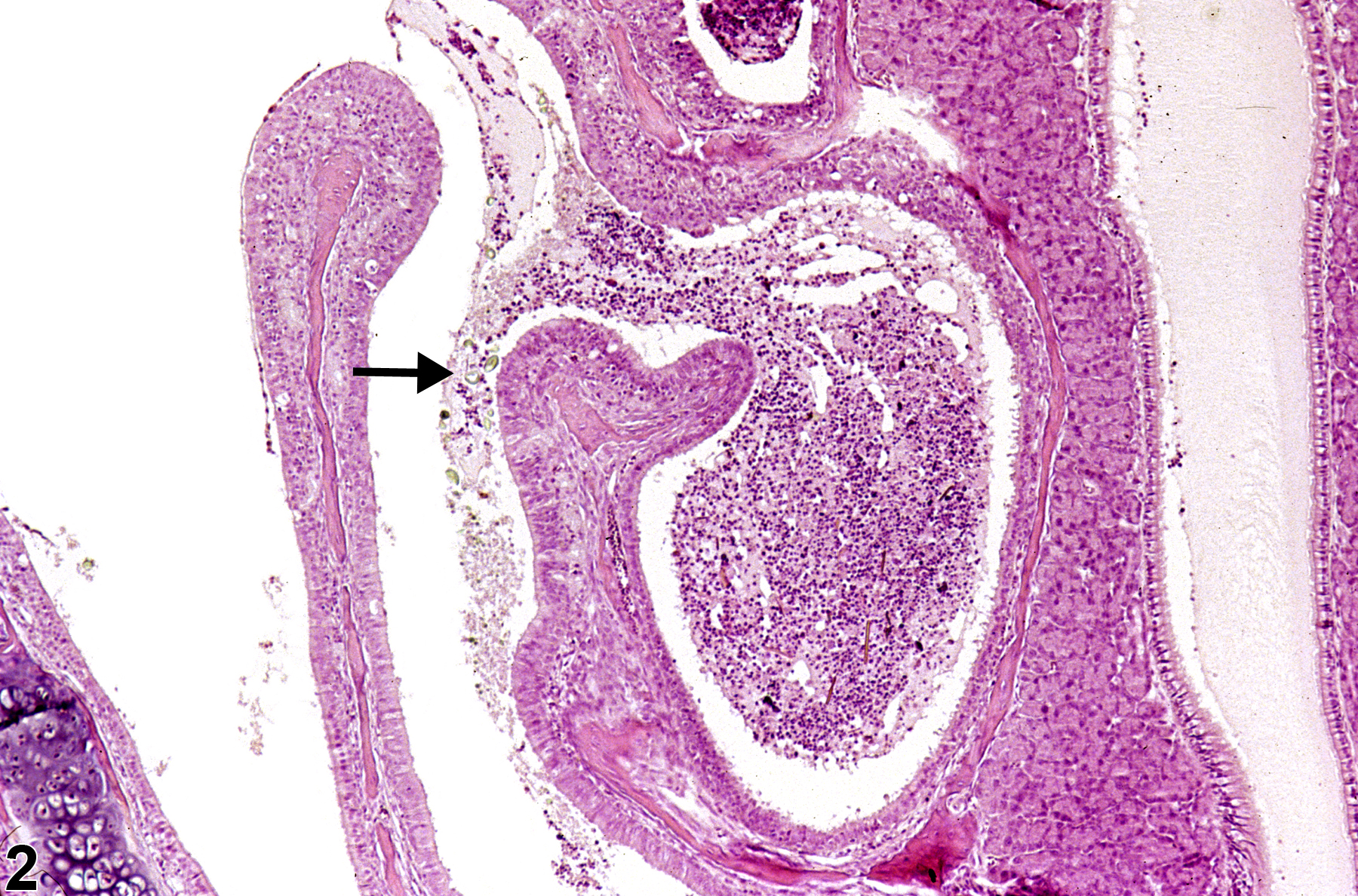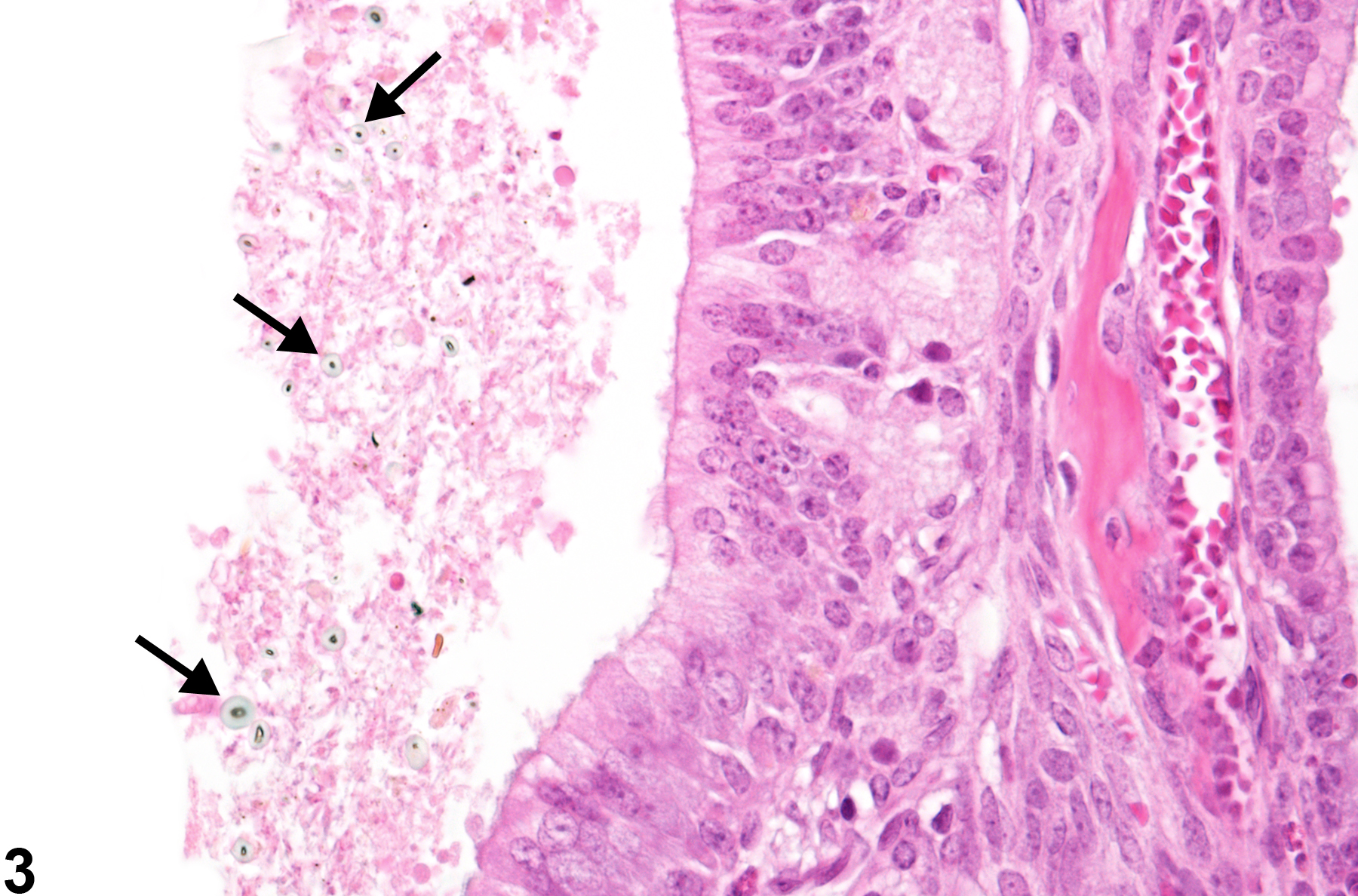Respiratory System
Nose - Foreign Body
Narrative
Boorman GA, Morgan KT, Uraih LC. 1990. Nose, larynx, and trachea. In: Pathology of the Fischer Rat: Reference and Atlas (Boorman GA, Eustis SL, Elwell MR, eds). Academic Press, San Diego, 315-337.
Uraih LC, Maronpot RR. 1990. Normal histology of the nasal cavity and application of special techniques. Environ Health Perspect 85:187-208.
Full Text: https://www.ncbi.nlm.nih.gov/pmc/articles/PMC1568325/
Nose - Foreign body in a female F344/N rat from a chronic study. There is hair fragment in the nasopharyngeal duct (arrow).




